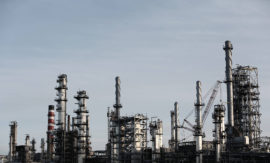Intended learning outcomes: Explain campaign planning. Differentiate between processor-dominated Scheduling and material-dominated scheduling. Describe a nonlinear usage quantity and a product structure with loops.
Course section 8.3: Subsections and their intended learning outcomes

8.3 Processor-Oriented Resource Management
Intended learning outcomes: Explain campaign planning. Differentiate between processor-dominated Scheduling and material-dominated scheduling. Describe a nonlinear usage quantity and a product structure with loops.

8.3.1 Campaign Planning
Intended learning outcomes: Explain campaign planning using an example of a process chain in chemical production. Identify campaign cycles for the example and a minimum campaign of one day’s production.

8.3.1b Synchronizing Process Stages
Intended learning outcomes: Describe how the process stages could be synchronized.

8.3.2 Processor-Dominated Scheduling versus Material-Dominated Scheduling
Intended learning outcomes: Differentiate between processor-dominated scheduling and material-dominated scheduling. Produce an overview on the use of the MRP II / ERP concept or of the lean / just-in-time concept compared to the processor-oriented concept.

8.3.3 Consideration of a Nonlinear Usage Quantity and of a Product Structure with Loops
Intended learning outcomes: Present the quantity of a manufactured product P as a nonlinear function of the usage quantity of a resource R. Identify possible solutions of issues entailed by a nonlinear usage quantity.
Course 8: Sections and their intended learning outcomes

Course 8 – The Concept for the Process Industry
Intended learning outcomes: Produce characteristics of the process industry. Disclose processor-oriented master and order data management. Explain in detail processor-oriented resource management. Describe special features of long-term planning.

8.2 Processor-Oriented Master and Order Data Management
Intended learning outcomes: Produce an overview on processes, technology, and resources. Present the process train: a processor-oriented production structure. Disclose lot control in inventory management.

8.3 Processor-Oriented Resource Management
Intended learning outcomes: Explain campaign planning. Differentiate between processor-dominated Scheduling and material-dominated scheduling. Describe a nonlinear usage quantity and a product structure with loops.

8.4 Special Features of Long-Term Planning
Intended learning outcomes: Disclose the determination of the degree of detail of the master production schedule. Describe pipeline planning across several independent locations.

8.5 Summary
.

8.6 Keywords
.

8.7 Scenarios and Exercises
Intended learning outcomes: Differentiate between batch production and continuous production. Calculate an example of manufacture of by-products. Elaborate an example of production planning in process industries.

8.8 References
.
![Case [Course 8]](https://opess.ethz.ch/wp-content/uploads/2017/02/08-270x163.jpg)
Case [Course 8]
.

8.1 Characteristics of the Process Industry
Intended learning outcomes: Explain divergent product structures and by-products. Describe high-volume line production, flow resources and inflexible facilities. Produce an overview on large batches, lot traceability, and loops in the order structure.
